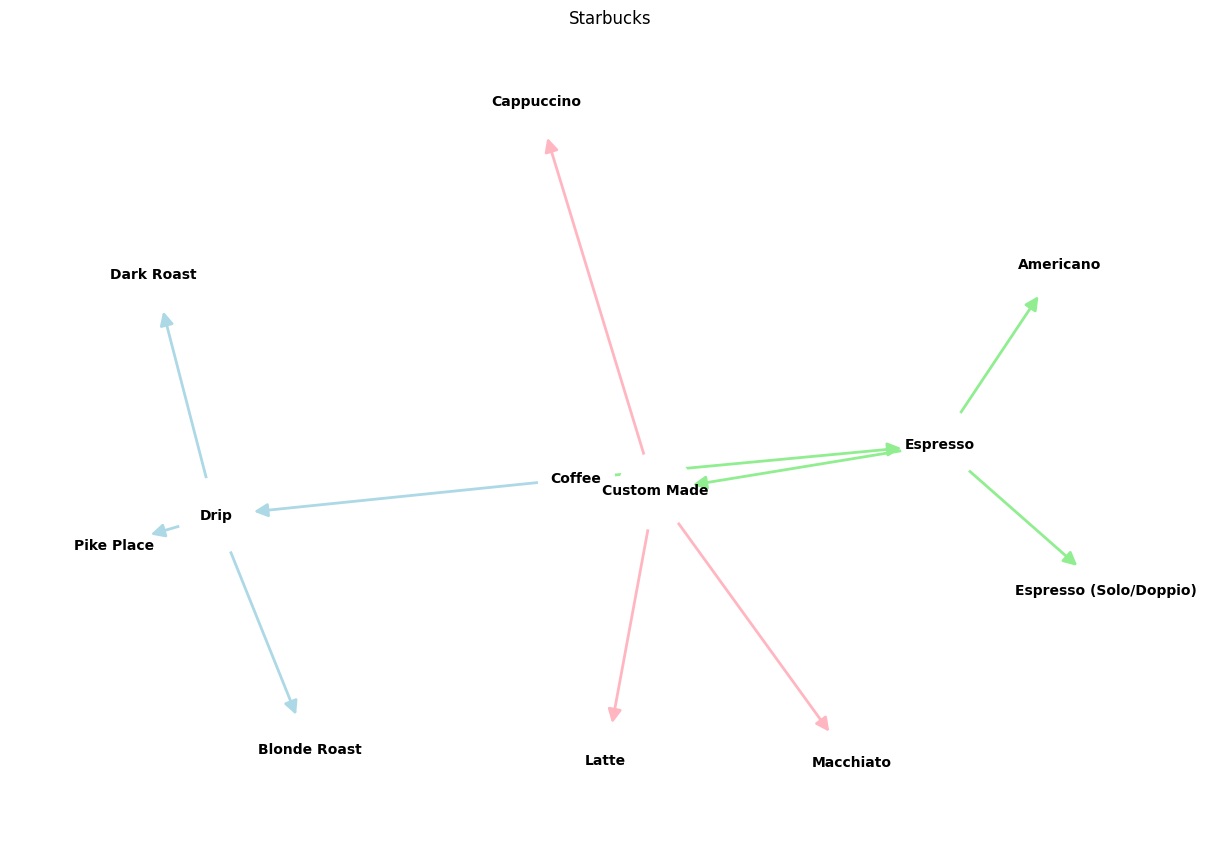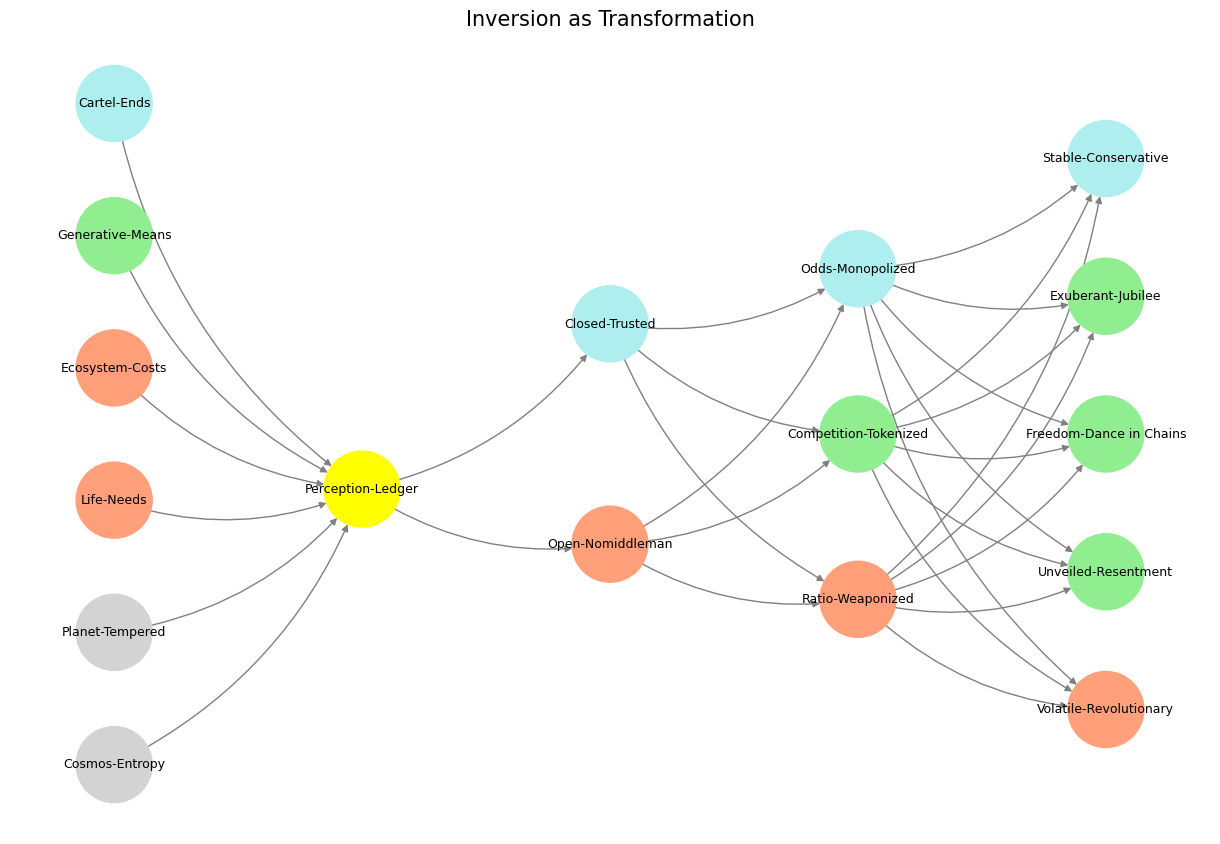Duality#
Heir. Genius. Brand. Tribe. Religion. These five words form a continuum of human evolution, not merely of societies but of power, identity, and meaning itself. At the heart of each stage lies a dynamic interplay between preservation, creation, and eventual ossification—cycles that shape individuals, movements, and nations. To understand these stages is to unlock a framework through which the trajectories of civilizations, from ancient empires to modern populist movements, can be comprehended. From the rise of fascism to the allure of MAGA, nationalism serves as the ultimate scaffolding upon which these stages unfold. It is both a product of these forces and a crucible that perpetuates them.
1. Heir - Resources 🌍
2. Genius - Needs 🍲
3. Brand - Cost 💲
4. Tribe - Means 🗡️ 💰 ❤️
5. Religion- Ends 🕊️
The heir stands at the threshold of legacy. Whether it is the inheritance of a throne, a corporate empire, or the traditions of a nation, the heir is given what others have built. They may preserve it, transform it, or squander it, but their existence is rooted in the structures of the past. Monarchies like those of Europe exemplified the static nature of inheritance for centuries, yet heirs also arise in modern forms. Donald Trump inherited not just wealth but a brand—a persona of American ambition that would later be weaponized into something far larger. Yet heirs need not only be individuals; they can also be nations. Post-World War I Germany, saddled with the legacy of defeat and humiliation under the Treaty of Versailles, inherited a fractured sense of identity and purpose, creating the fertile ground for the genius to emerge.
The genius disrupts and creates. They are adversarial by nature, challenging the constraints of the inherited order and offering something revolutionary in its place. Adolf Hitler, in his early rise, embodied this stage for Germany. He did not merely accept the inheritance of a broken Weimar Republic; he transformed it through radical ideology and propaganda. The promise of a thousand-year Reich was both audacious and seductive—a vision of national revival through sheer willpower. Similarly, in America, Trump seized upon an undercurrent of discontent, recasting grievances about globalization, immigration, and the decline of manufacturing into the potent slogan: “Make America Great Again.” The genius often thrives on identifying the unspoken desires of the disaffected, translating them into action and galvanizing movements.
But genius alone is chaotic, unstable. It must be consolidated into a recognizable structure, and this is where the brand emerges. A brand simplifies and packages genius, making it accessible to the masses. The swastika, the uniforms, and the orchestrated rallies of Nazi Germany were deliberate acts of branding, designed to forge unity and instill reverence. Branding was not new—nations have long used symbols and rituals to galvanize their people, from the Roman eagle to the Stars and Stripes—but the Nazis perfected it as a tool of mass mobilization. In modern America, MAGA caps, slogans, and rallies achieved a similar effect, transforming a political campaign into a recognizable identity. Branding is inherently reductive—it distills complex ideas into symbols—but it is this simplicity that allows movements to grow and endure.
Show code cell source
import matplotlib.pyplot as plt
import networkx as nx
# Function to create the CoffeeTree network with colored edges
def create_colored_coffee_network():
G = nx.DiGraph()
# Add edges with color attributes
edges = [
("Coffee", "Drip", "lightblue"), # Drip branch
("Coffee", "Espresso", "lightgreen"), # Espresso branch
("Drip", "Blonde Roast", "lightblue"),
("Drip", "Pike Place", "lightblue"),
("Drip", "Dark Roast", "lightblue"),
("Espresso", "Espresso (Solo/Doppio)", "lightgreen"),
("Espresso", "Americano", "lightgreen"),
("Espresso", "Custom Made", "lightgreen"),
("Custom Made", "Latte", "lightpink"),
("Custom Made", "Cappuccino", "lightpink"),
("Custom Made", "Macchiato", "lightpink"),
]
for source, target, color in edges:
G.add_edge(source, target, color=color)
return G
# Function to extract edge colors for visualization
def get_edge_colors(G):
return [G[u][v]['color'] for u, v in G.edges]
# Create the network with colored edges
coffee_network = create_colored_coffee_network()
# Plot the network with specified colors
plt.figure(figsize=(12, 8))
# Set a fixed seed for layout consistency
pos = nx.spring_layout(coffee_network, seed=3)
# Get edge colors for plotting
edge_colors = get_edge_colors(coffee_network)
# Draw the network
nx.draw(
coffee_network,
pos,
with_labels=True,
node_color="white",
node_size=3000,
font_size=10,
font_weight="bold",
edge_color=edge_colors,
arrowsize=20,
width=2
)
# Add a title to the diagram
plt.title("Starbucks")
plt.show()

From brand emerges tribe. Tribes offer belonging, a shared identity that binds individuals into a collective. Nationalism is perhaps the ultimate tribal force, transcending mere geography to become a shared mythos. The Nazis were masterful in creating a sense of tribal superiority, forging a narrative of Aryan dominance that demanded loyalty and offered a scapegoat in the form of Jews, communists, and other “undesirables.” MAGA, though far less extreme, similarly tapped into the tribal instincts of Americans who felt left behind by globalism. The promise of a return to greatness—one defined by secure borders, traditional values, and economic prosperity—galvanized a coalition that saw itself as the true inheritors of American identity. In India, Narendra Modi’s brand of Hindu nationalism has similarly created a tribe defined by cultural revival and exclusion of perceived outsiders. Nationalism, whether in 1930s Germany or 21st-century America, thrives on the creation of an in-group and the demonization of an out-group.
At its peak, the tribe sanctifies the brand into religion. The genius becomes a prophet, their ideas enshrined as dogma. National Socialism did not merely govern Germany; it sought to replace Christianity with a new moral and cultural order, one that placed the state and its leader at the center. Similarly, the elevation of Trump within certain MAGA circles approached a quasi-religious fervor. His words became gospel, his perceived enemies apostates. Religion, in this context, need not involve gods—it is a system of belief that explains the world and defines morality for its adherents. Nationalism, when it reaches this stage, ceases to be rational. It becomes mythological, eternal, immune to critique. The danger, of course, lies in this ossification. A religion built on nationalism often demands total obedience, quashing dissent and creativity in the process.
History repeats itself because these cycles are deeply embedded in human nature. Once religion ossifies, the conditions are ripe for new geniuses to rise and challenge the established order. In this sense, MAGA is not an anomaly but a continuation of a pattern seen throughout history. Whether it was the rise of fascism in the 20th century, the revolutions of 1848, or even the formation of the American Republic, each movement follows the arc from inheritance to transformation, from tribe to sanctification.
The modern world, connected yet fractured, is particularly susceptible to these cycles. Social media amplifies genius into brand, brand into tribe, and tribe into something resembling religion at an unprecedented speed. The heirs of today—nations, corporations, and individuals—must navigate this landscape carefully. To inherit is not enough; the genius, however disruptive, must find a way to innovate without descending into tyranny. Nationalism, the eternal specter, lingers at every stage of this cycle. It can be a force for unity or destruction, for belonging or exclusion. In the end, the choice lies not in escaping the cycle but in shaping it toward a more humane and inclusive future. But history offers little optimism—humanity often chooses the path of least resistance, the rallying cry of the tribe, the comfort of religion. The cycle endures because it is, in essence, what we are.

Fig. 13 Leveraged Agency. At Championship-level, tactical approaches aren’t going to win you the trophy. The odds here are 1000/1 or longer and can’t be collapsed, given the numerous entrants and exists each year – similar to what we witnessed in leveraged agency sort of games like horse-racing. The higher the risk, higher the error, because no amount of analysis can ever utilize the most up-to-date dataset when the very populations of study are so dynamic.#
Show code cell source
import numpy as np
import matplotlib.pyplot as plt
import networkx as nx
# Define the neural network fractal
def define_layers():
return {
'World': ['Cosmos-Entropy', 'Planet-Tempered', 'Life-Needs', 'Ecosystem-Costs', 'Generative-Means', 'Cartel-Ends', ], # Polytheism, Olympus, Kingdom
'Perception': ['Perception-Ledger'], # God, Judgement Day, Key
'Agency': ['Open-Nomiddleman', 'Closed-Trusted'], # Evil & Good
'Generative': ['Ratio-Weaponized', 'Competition-Tokenized', 'Odds-Monopolized'], # Dynamics, Compromises
'Physical': ['Volatile-Revolutionary', 'Unveiled-Resentment', 'Freedom-Dance in Chains', 'Exuberant-Jubilee', 'Stable-Conservative'] # Values
}
# Assign colors to nodes
def assign_colors():
color_map = {
'yellow': ['Perception-Ledger'],
'paleturquoise': ['Cartel-Ends', 'Closed-Trusted', 'Odds-Monopolized', 'Stable-Conservative'],
'lightgreen': ['Generative-Means', 'Competition-Tokenized', 'Exuberant-Jubilee', 'Freedom-Dance in Chains', 'Unveiled-Resentment'],
'lightsalmon': [
'Life-Needs', 'Ecosystem-Costs', 'Open-Nomiddleman', # Ecosystem = Red Queen = Prometheus = Sacrifice
'Ratio-Weaponized', 'Volatile-Revolutionary'
],
}
return {node: color for color, nodes in color_map.items() for node in nodes}
# Calculate positions for nodes
def calculate_positions(layer, x_offset):
y_positions = np.linspace(-len(layer) / 2, len(layer) / 2, len(layer))
return [(x_offset, y) for y in y_positions]
# Create and visualize the neural network graph
def visualize_nn():
layers = define_layers()
colors = assign_colors()
G = nx.DiGraph()
pos = {}
node_colors = []
# Add nodes and assign positions
for i, (layer_name, nodes) in enumerate(layers.items()):
positions = calculate_positions(nodes, x_offset=i * 2)
for node, position in zip(nodes, positions):
G.add_node(node, layer=layer_name)
pos[node] = position
node_colors.append(colors.get(node, 'lightgray')) # Default color fallback
# Add edges (automated for consecutive layers)
layer_names = list(layers.keys())
for i in range(len(layer_names) - 1):
source_layer, target_layer = layer_names[i], layer_names[i + 1]
for source in layers[source_layer]:
for target in layers[target_layer]:
G.add_edge(source, target)
# Draw the graph
plt.figure(figsize=(12, 8))
nx.draw(
G, pos, with_labels=True, node_color=node_colors, edge_color='gray',
node_size=3000, font_size=9, connectionstyle="arc3,rad=0.2"
)
plt.title("Inversion as Transformation", fontsize=15)
plt.show()
# Run the visualization
visualize_nn()


Fig. 14 Tryptophan, Tryptamine, and Y’all Who Be Trippin’. Information in nature is encoded in gravity and photons and zapped from the cosmos, to earth, to life, to silicon. As for the point of view, thats open for discourse. Source: Lorenzo Expeditions. And if we invert all the aforementioned, then we might say something like: The code provides a unique blend of art and science, creating a visual narrative that might engage viewers in thinking about the structure of thought, decision-making, or the whimsical nature of reality as depicted in “Alice’s Adventures in Wonderland” - Grok-2.#
